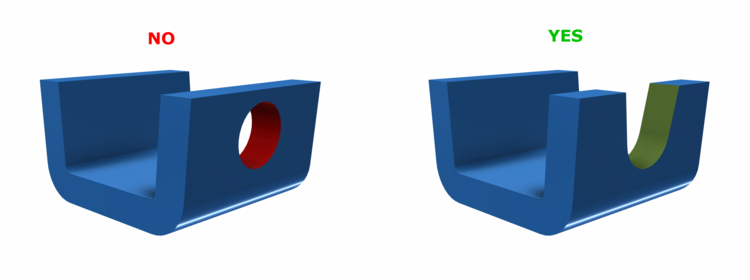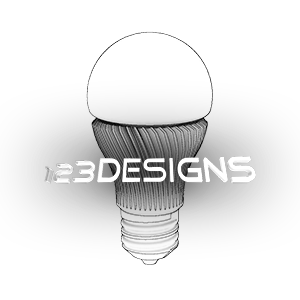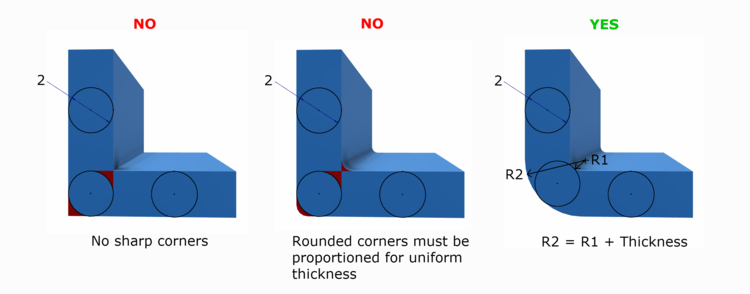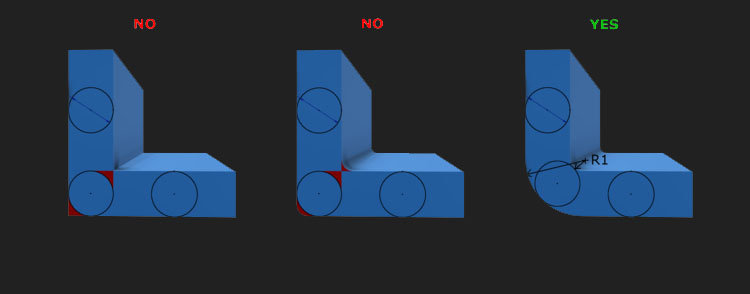
If you are an inventor planning to use plastic in your product, there are some design rules you should be aware of. This article will help you understand some of the limitations of injection molding, the most common way to manufacture plastic parts. This knowledge will also help you evaluate your design’s readiness for plastic injection molding.
Uniform Thickness
The first rule of plastic is that every wall must have the same thickness. Following this design rule gets difficult in the corners. Unfortunately, injection molding will not work well with sharp corners. The image below shows why sharp corners break the uniform thickness rule, related thickness mistakes, and the best type of corner for plastics…rounded. Most plastic consumer products are between 2-3 mm (0.08-0.12 in) thick.
Draft
Without draft, a plastic part would not be able to be removed from it’s mold. True 90 degree walls are not possible. 3 degrees of draft angle is typical.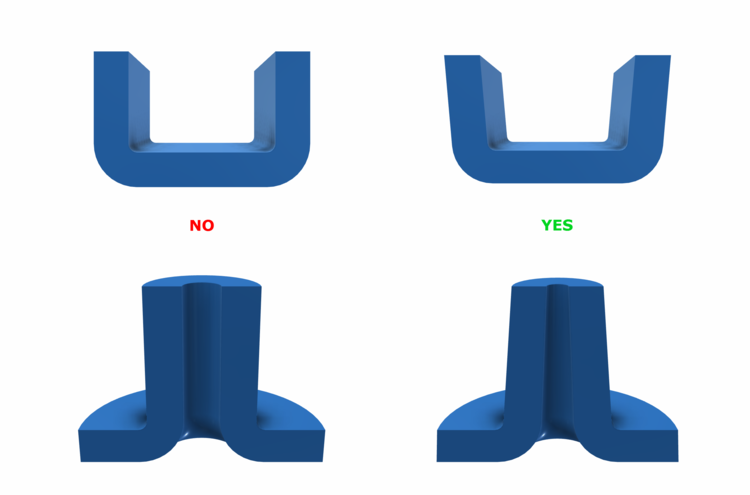
Undercuts
Undercuts can be thought of as draft in the wrong direction. Holes in side walls are a common example. Such features can be injection molded, but require extra tooling = extra cost. Undercuts should be completely avoided if possible. If such features are necessary be sure to discuss them with an experienced plastic part designer.